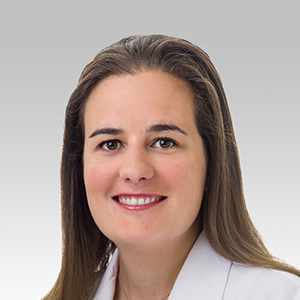The Rise of Endometrial Cancer
Obesity Is a Leading Risk Factor
Updated February 2024
Cancer of the uterus (uterine cancer) is the most common gynecologic cancer in the United States. Although there are two types, endometrial cancer is the most common uterine cancer. Endometrial cancers arise from the inner lining of the uterus, while the second type — uterine sarcoma — occurs in the myometrium, or the muscle wall of the uterus.
It’s an imbalance of estrogen that leads to endometrial cancer.— Emma L. Barber, MD
While uterine sarcoma is rare, endometrial cancer is on the rise. This upward trend can be partially attributed to the rise in obesity, which is the leading risk factor for uterine cancer.
Obesity and Endometrial Cancer
A number of cancers are associated with obesity, including endometrial cancer. An analysis of 26 studies by the American Institute for Cancer Research showed a 50% increased risk of endometrial cancer for every increase of five BMI units.
Obesity is also closely tied to hormonal changes, including estrogen levels. “Women who are overweight or obese have higher rates of circulating estrogen in their bloodstream,” says Emma L. Barber, MD, a gynecologic oncologist at Northwestern Medicine. This estrogen stimulation can lead to the development of cancer.”
Menopause and Endometrial Cancer
Endometrial cancer typically occurs after menopause. During the menstrual cycle, estrogen stimulates the uterus. As you age, your ovaries release fewer hormones and you experience a natural decline in estrogen levels.
“It’s an imbalance of estrogen that leads to endometrial cancer. After menopause, those hormones are no longer produced,” says Dr. Barber. “The ovaries are the only source of the hormone progesterone, which counterbalances the effects of estrogen on the endometrium.”
For those who use hormone therapy to ease menopause symptoms, studies have shown an increased risk of endometrial cancer when estrogen is taken without combination progesterone. Combination therapy is oftentimes a safe option if menopause symptoms are severe. Hormone replacement therapy should be taken only under the guidance of a clinician who specializes in women’s health.
Although the exact cause is unknown, other risk factors of endometrial cancer include:
- Using an intrauterine device (IUD)
- Advancing age (age 50 and older)
- Family history of endometrial cancer or colorectal cancer
- Personal history of breast cancer or ovarian cancer
- History of endometrial hyperplasia
- Type 2 diabetes
- History of polycystic ovary syndrome (PCOS)
- Certain genetic conditions, such as Lynch syndrome
Symptoms and Treatment
The most common symptom is abnormal vaginal bleeding. However, for most, this is the only symptom they may experience. “Even if it’s one spot, women who have irregular bleeding, especially at or after menopause, should be evaluated,” Dr. Barber urges.
Other symptoms can be very subtle and may include:
- Vaginal discharge
- Pain when urinating
- Pain during sex
- Unexplained weight loss
- Pain, pressure or a lump in the pelvic area or lower belly
According to Dr. Barber, a conservative treatment approach may involve hormone therapy in the form of higher doses of progesterone to offset the levels of estrogen. However, a hysterectomy is typically a successful treatment option for most patients, she says. Other forms of treatment may include radiation therapy, chemotherapy and immunotherapy.
The Bottom Line
If you notice irregular bleeding or spotting, get a medical evaluation right away, says Dr. Barber. If you are diagnosed with endometrial cancer, seek out a specialist. “It’s really important for patients who have been diagnosed to see a gynecologic oncologist,” says Dr. Barber. “They can offer the gold standard of care and leading-edge treatment.”
For those looking to reduce their risk for endometrial cancer, Dr. Barber encourages a healthy diet and daily moderate physical activity.






